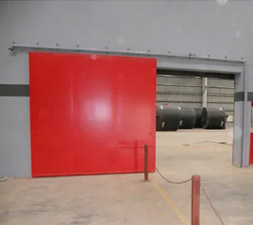Airports are more than just transportation hubs—they’re dynamic ecosystems comprising aircraft hangars, passenger terminals, fueling stations, maintenance zones, and more. This complexity, while essential for efficient operations, also introduces a wide array of fire risks. Ensuring robust fire safety across such diverse facilities is not optional—it’s a critical requirement.
In this article, we explore the core elements of airport fire safety and highlight strategic approaches that reduce risks and enhance overall protection.
Unique Fire Risks at Airports
Airports face distinctive fire hazards due to:
• High-energy aircraft operations
• Flammable aviation fuels
• Complex electrical and mechanical systems
• High passenger density
• Maintenance activities involving open flames and volatile materials
According to the **National Fire Protection Association (NFPA)**, key fire risks in aviation include fuel ignition, malfunctioning aircraft electrical systems, and maintenance-related sparks or leaks. Fire protection strategies must therefore address both **airborne and ground-based** threats.
Passenger Terminals: Where Safety Meets Foot Traffic
Passenger terminals are busy, high-risk zones. From food courts and retail outlets to baggage systems and HVAC networks, each area presents potential ignition points.
**Key fire safety solutions include:**
• Smart smoke control systems
• Automated detection and suppression technologies
• Clear evacuation plans and signage
• Fire-resistant building materials
Tailoring these solutions through risk assessments and digital simulations ensures preparedness without compromising passenger experience.
Aircraft Hangars: High Value, High Risk
Hangars shelter the most valuable airport assets—aircraft. Due to their large, open spaces and minimal compartmentalization, hangars demand a blend of **active** and **passive** fire protection systems.
**Best practices include:**
• Foam-based extinguishing systems
• Advanced heat and smoke detection systems
• Passive barriers such as fire-rated walls and thermal insulation
Refueling Areas: Managing the Most Volatile Risk
Refueling operations pose one of the gravest risks in aviation safety. Every step—from underground pipelines to above-ground tankers—must comply with rigorous fire protection standards.
**According to NFPA guidelines, essential precautions include:**
• Spill prevention systems
• Anti-static grounding equipment
• Emergency shutdown protocols
• Fire-rated structures and automatic isolation systems
Maintenance Areas: Fire Risk in Technical Zones
Aircraft maintenance involves welding, fuel system inspections, and component testing—all of which raise fire risk.
**Recommended fire safety measures:**
• Dedicated ventilation for fume dispersion
• Use of fire-rated tools and protective barriers
• Segregation of flammable materials
• Continuous staff training and drill programs
NFPA codes provide a structured framework to embed fire safety in each phase of the maintenance lifecycle.
Emergency Preparedness: Seconds Matter
Even the most advanced systems must be backed by **trained personnel** and **clear protocols**. ICAO and NFPA outline stringent guidelines for Aircraft Rescue and Firefighting (ARFF).
**Key components include:**
• Specialized firefighting vehicles
• High-performance extinguishing agents
• Regular emergency simulations and staff training
• Integrated communication and response systems
The Path Forward: Continuous Improvement
Fire safety at airports is an evolving discipline. New trends include:
• Environmentally safe extinguishing agents
• AI-powered smoke detection
• Fire behavior modeling via **numerical simulations**
• Safer integration of **solar panels**, **EVs**, **battery storage**, and **new energy systems**
Institutions like **NFPA** and **ICAO** continuously release updated guidelines. Compliance, therefore, is not a one-time effort—it’s a **culture of safety**.
Fire Engineering & Consultancy: The Role of Experts
Effective airport fire safety demands not only technical installations but deep knowledge of global aviation codes and fire behavior.
At **Efectis**, our fire consultancy services are aligned with both **national and international standards**, delivering:
• Custom fire risk assessments
• Façade and roof fire behavior analysis
• ATEX and explosion protection
• EV and battery system safety reviews
• Fire simulations and scenario planning
Final Thoughts
In a world of ever-evolving transportation systems, airports must be ahead of fire risks—not behind them. A proactive fire strategy saves lives, protects critical assets, and ensures continuity in the high-stakes world of aviation.
Stay compliant. Stay protected. Partner with certified experts for customized fire safety solutions.
\#FireSafety #AirportSecurity #NFPA #Aviation #Efectis #EmergencyPreparedness #FireEngineering #RidvanYagmur #AircraftSafety #ICAO #ATEX #BatterySafety #EVSafety #NumericalSimulation
This is our view

















